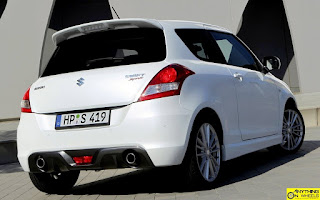Indian Railways has been the lifeline of the nation for over 150 years, ferrying passengers and goods come rain, shine, war or famine. Needless to say, the Government-run behemoth has had quite a momentous journey all through - as one would expect in an organization that survived two World Wars and India's struggle for independence.
Last week, Indian Railways added yet another feather to it's cap by putting the 'Made-in-India' high-power WAG-12 electric locomotive into commercial operation.
Back in 2015, the French transport solutions provider Alstom won a whopping Euro 3.5 billion order from the Ministry of Railways for delivering 800 high-power electric locomotives as part of a public-private partnership programme to modernize India's rail infrastructure. Subsequently, Madhepura Electric Locomotive Private Limited - a joint-venture between Alstom (74%) and Indian Railways (26%) - was set up in Bihar with a capacity to roll out 120 locomotives annually.
Though the facility delivered the first unit way back in 2018, the WAG-12 couldn't be put into commercial service as the locomotive was reported to have design issues and couldn't meet oscillation trials. Alstom had to redesign the bogies and a host of other components to eventually clear the trials and meet the specifications laid out by the Research Design and Standards Organization (RDSO), the technical wing of the Ministry of Railways in India.
WAG-12B, as the locomotive is now designated, made its maiden commercial run between Pt. Deen Dayal Upadhyaya Junction (formerly Mughalsarai Junction) and Shivpur of East Central Railway on 18-May-2020.
Rated at 9,000 KW (12,000 horsepower), the WAG-12B is twice as powerful as India's erstwhile powerhouse, the WAG-9. Intended to be put to use in Dedicated Freight Corridors being set up, the WAG-12B is touted to be a game-changer capable of hauling 30% more loads (6,000 tonnes) at twice the current average speed (120 km/h). This 8-axle locomotive uses state-of-the-art Insulated Gate Bipolar Transistor (IGBT)-based propulsion system for improved efficiency and equipped with a host of energy-saving tech including regenerative braking, low voltage wires and cables and LED lights.
With a permanent twin-cab design painted in dual shades of blue, the WAG-12B looks humongous and intimidating. Though a sleeker cab would have looked nicer, the boxy design fits well with the rest of the locomotives that ply on Indian rails. Modern amenities inside include air-conditioned driver cabs on either side, a pantry and a toilet - features that are sure to be appreciated in the hot and humid long-haul corridors these locomotives are expected to run on.
Though only 10 of these locomotives have reportedly joined the Indian Railways fleet for commercial operations, the plant in Bihar would ramp up production to deliver 90 more in the current financial year and 100 every year thereafter until the order is completed. Once done, the Dedicated Freight Corridors are going to change the way we look at freight trains forever!











